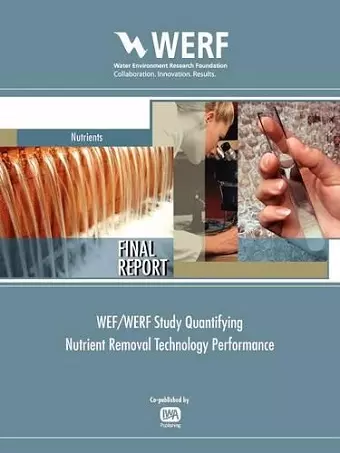WEF/WERF Study Quantifying Nutrient Removal Technology Performance
Denny S Parker author Charles B Bott author
Format:Paperback
Publisher:IWA Publishing
Published:29th Jun '11
Currently unavailable, and unfortunately no date known when it will be back

The Water Environment Research Foundation (WERF) Nutrient Challenge Research Program and the Water Environment Federation (WEF) cooperated in a comprehensive study of nutrient removal plants designed and operated to meet very low levels of effluent N and P. Both existing and new technologies are being adapted to meet requirements that are as low as 3 mg/L TN and 0.1 mg/L TP, and there is a need to define their capabilities and reliabilities in the real world situation of wastewater treatment plants. This effort focused on maximizing what can be learned from existing technologies in order to provide a database that will inform key decision makers about proper choices for both technologies and rationale bases for statistical permit writing.
To this end, managers of 22 plants, 10 achieving low effluent TP, 9 achieving low effluent TN, and 3 achieving low effluent ammonia, were asked to provide 3 years of operational data that were analyzed using a consistent statistical approach. Technical papers were compiled for each plant including a summary of influent loading, process design and operating conditions, unusual events, upsets and anecdotes related to process operation, and the statistical summary of final effluent data that considered both process reliability and the permit limits applied. The first year of this effort culminated in a workshop held in Chicago at WEFTEC 2008 and the second year in a workshop held in Orlando at WEFTEC 2009.
Technological conclusions that can be drawn from the study in terms of what can be learned by comparing the different nutrient removal processes employed at these 22 plants and several additional BNR facilities in Florida are described in joint manuscripts submitted by Parker et al (2009) and Bott et al (2009). In a parallel effort using the data and conclusions generated from this study, Neethling et al (2009) proposed a set of quantitative descriptors that attempt to define the nutrient removal performance in terms of effluent quality percentile statistics referred to as Technology Performance Statistics (TPSs). The TPSs were defined as three separate values representing the lowest, median, and reliably achievable performance (Neethling et al, 2009).
ISBN: 9781843393986
Dimensions: 234mm x 156mm x 18mm
Weight: unknown
172 pages